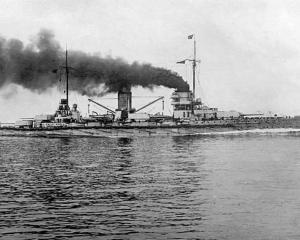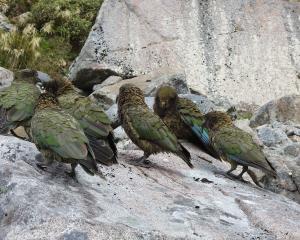GeraldCunningham alleges nothing has changed to improve or protect Otago's polluted waterways, while Otago Regional Council chief executive Peter Bodeker responds, claiming the council's strategy to maintain and advance water quality is working.
Let there not be a moment's doubt, when looking at the highly publicised changes recently introduced by the Otago Regional Council (ORC) to protect Otago's waterways, that nothing has changed.
It now appears that the only hope of salvation for Otago's polluted waterways is the fall in the international price for New Zealand dairy products, down some 40% since February 2014.
In spite of all the recent local body political spin, there is still no bylaw to prevent cattle defecating and urinating directly into Otago waterways.
The only regulation that landowners need to be wary of when stock inevitably empty their bowels or bladder directly into water running through rural Otago, is to ensure that the animals do not pug the stream, or discolour the water.
Many Otago landowners have long been aware of their responsibilities when it comes to rural water and must be congratulated for taking steps such as fencing streams and rivers off from stock.
However, take a short drive anywhere in rural Otago, without even bothering to leave the main highways, and it will soon become obvious that the problem of ongoing pollution of local waterways is still a serious issue.
It is not the large rivers and streams that are suffering, as many of these have long been protected by fences and are just too political for landowners to fool with.
Instead, it is the hundreds of small streams that feed into these rivers which are currently being plundered and raped.
When considering a change of rules to protect rural Otago's water from ever increasing numbers of dry dairy cattle, the ORC must have found itself facing several dilemmas.
Tougher regulations would have been perceived by a democratically elected regional council as being unpopular within the farming community, possibly leading to a pussyfoot approach with a wary eye on future elections.
A lack of council manpower to police tougher regulations over such a wide area would have been another.
A third is how to change an in-house culture of unwillingness to move on complaints, especially by council staff reluctant to upset the small rural community which they must live in.
At present, any individual reporting the blatant abuse of rural water requires a thick skin.
Council staff must be cajoled into visiting a polluted site, rather than just swinging by ''when next in the area''.
Once on site, there is a reluctance to act, a reluctance to follow the water upstream to try to identify the cause of the pollution and usually nothing in the way of follow-up or feedback.
The situation is further aggravated by neighbours unwilling to upset neighbours by laying complaints, which is understandable.
That Otago waterways are polluted is well documented. It is also a fact this pollution is a result of stock being given access to waterways by landowners.
Under the new ORC scheme the protection of Otago's waterways has been left in the hands of these very landowners, who, after some public relations spin are now expected to police themselves.
What landowner in his or her right mind, when they realise they have broken the law, would hand themselves in to face a heavy fine.
The only solution to the ongoing direct pollution of Otago waterways is either a continuing fall in international dairy prices, or the fix adopted by Environment Southland.
This body has shown that compulsory fencing of waterways flowing through intensively farmed land and the creation of buffer zones inside those fences is the only way to stop direct pollution of waterways, while at the same time helping to control the leaching of toxic run-off.
This does not mean that all Otago waterways should be fenced off from stock.
Only those which run through rural land carrying high numbers of dry dairy cows, dairy bulls, replacement heifers and deer.
E. coli-ridden seas of mud that contain manure, urine, phosphorous, nitrogen and other poisons, especially where animals feed on winter crops, are now a familiar sight throughout Otago.
In addition to fencing its water, Southland is in a more favourable position as much of its water is protected by the Fonterra requirement that dairy farms fence off their waterways.
Otago is in danger of being much more exposed than Southland, as it is rapidly becoming the location where dry dairy cows are sent once they leave the dairy farm. When that happens they fall outside Fonterra rules, as landowners running these dry Fonterra dairy cows are not required to fence off their water.
The fact Otago waterways are being polluted by animals appears to be acceptable as the sight of stock standing in streams has become commonplace.
Imagine the nationwide outcry if dozens of humans were seen doing the same thing in paddocks alongside the highways of Otago.
• Gerald Cunningham is a former Auckland businessman turned Central Otago author, photographer and historian. He lives in Lauder.












